You are using an out of date browser. It may not display this or other websites correctly.
You should upgrade or use an alternative browser.
You should upgrade or use an alternative browser.
Secret Stealth VTOL Transport - "Senior Citizen"
- Joined
- 27 December 2005
- Messages
- 17,755
- Reaction score
- 26,483
special need to-know, according to a quick search.
- Joined
- 17 October 2006
- Messages
- 2,393
- Reaction score
- 1,198
Just looked back at the Rutan connection... has anyone floated/exploded the hypothesis that SC was the full-size, CT64-powered version of the Model 133, which was the subject of a Beech/GELAC announcement at the time of the rollout and then met the Boojum?
"'But oh, beamish nephew, beware of the day,
If your Snark be a Boojum! For then
You will softly and suddenly vanish away,
And never be met with again!'
"'But oh, beamish nephew, beware of the day,
If your Snark be a Boojum! For then
You will softly and suddenly vanish away,
And never be met with again!'
- Joined
- 6 August 2007
- Messages
- 3,898
- Reaction score
- 6,000
Just looked back at the Rutan connection... has anyone floated/exploded the hypothesis that SC was the full-size, CT64-powered version of the Model 133, which was the subject of a Beech/GELAC announcement at the time of the rollout and then met the Boojum?
"'But oh, beamish nephew, beware of the day,
If your Snark be a Boojum! For then
You will softly and suddenly vanish away,
And never be met with again!'
Yes, and the connections to Rockbox and Big Safari.
- Joined
- 17 October 2006
- Messages
- 2,393
- Reaction score
- 1,198
Sorry, I should not have made the question either/or. Has the hypothesis been exploded? It has a nice Occam's Razor edge to it, since the full-size spec to which Model 133 was designed has "Tehran" written all over it.
Q-nimbus
ACCESS: Confidential
- Joined
- 1 June 2020
- Messages
- 177
- Reaction score
- 204
It might be me, but it suddenly struck me how brilliant the program name ‘Senior Citizen’ is. Hide in plain sight with a name that is common English and gives you millions of Google hits. It might be a happy coincidence, especially since Senior Citizen was before widespread internet, but the US Army might have been ahead of the game. Using ordinary names or word combinations would make it easier to hide a program online in this day and age.
- Joined
- 27 December 2005
- Messages
- 17,755
- Reaction score
- 26,483
The unavoidable conclusion would be to use porn related terms in program names.
RavenOne
ACCESS: Top Secret
- Joined
- 18 June 2008
- Messages
- 1,005
- Reaction score
- 2,690
Reminds me of Team Knight Rider hybrid C-17 V/STOL transport that transported KITT Foundation vehicles in the tv series.
Cheers
RavenOne
ACCESS: Top Secret
- Joined
- 18 June 2008
- Messages
- 1,005
- Reaction score
- 2,690
It might be me, but it suddenly struck me how brilliant the program name ‘Senior Citizen’ is. Hide in plain sight with a name that is common English and gives you millions of Google hits. It might be a happy coincidence, especially since Senior Citizen was before widespread internet, but the US Army might have been ahead of the game. Using ordinary names or word combinations would make it easier to hide a program online in this day and age.
It’s a wild shot in the dark , how about said platform is in full view at an airbase or an OEM facility.. Best way to hide a project is not to shove it in the middle of groom lake in a secure no-one%will-ever%see.
Take for instance testing on likes of 757 Catbird or NT-43 Rat.....
when the 56rh RQS were based at RAF lakenheath until 2015/16 when the unit moved to Aviano AFB in Italy, I made a passing joke to several enthusiasts that one could hide Stealth Hawk and park or amongst the Pave Hawks and unless someone is very attentive , one could walk or drive by without knowing. But yours truly plus several dozen enthusiasts could spot any inconsistency.
For those of you who know Lakenheath, the Pave Hawks were parked in the Hardened Aircraft Shelters around the back by the weapons storage area. Plus surrounded By trees etc
My photo from the other month of pair of C-17A from McChord and Wright Pat parked near where the Pave Hawks were based. I took that from the Warren and both C-17 came in to support the Mountain Home F-15E deploying to Mid East which had Stopped here en route to the sandpit.
cheers
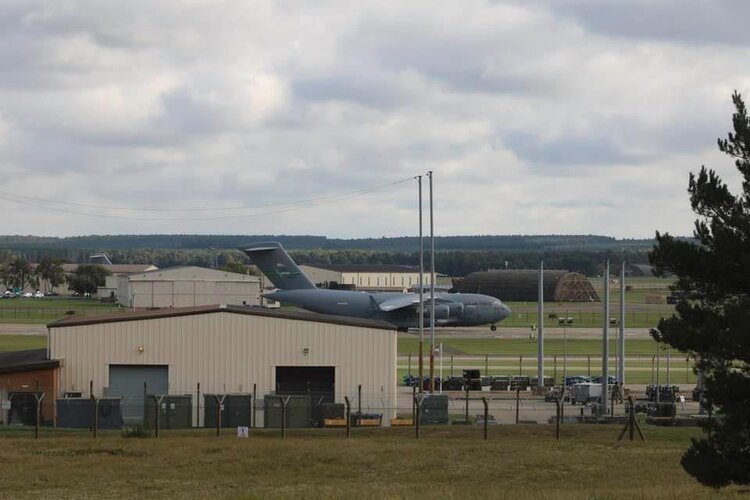
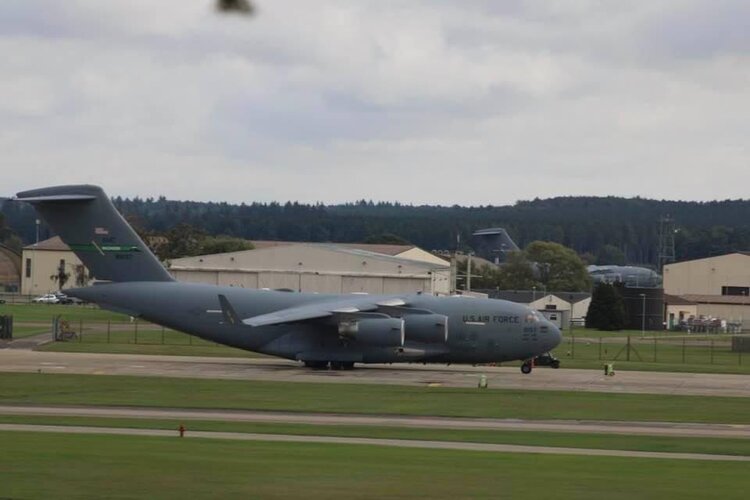
Last edited:
RavenOne
ACCESS: Top Secret
- Joined
- 18 June 2008
- Messages
- 1,005
- Reaction score
- 2,690
Wouldn't that be too much of an airframe to hide in plain sight?
How big in theory would Senior Citizen airframe? Certainly not C-17A size I would have thought more along the lines of an Airbus C295 or Leonardo C-27J?
So in theory one could hide it at the likes of RAF Lakenheath with all the trees surrounding , as opposed to RAF Mildenhall around the corner as it is pretty much in the open with viewing area at Johns Field on Runway 10 (was Runway 11 till recently from the west) or the mound and Folly Road on Runway 28 (formerly 29).
352nd Special Ops Wing at Mildenhall is located between 'SOG rOW' visible from the main road going to West Row, on the south side with th 67th SOS MC-130J Commando II while on the north side the 7th SOS CV-22B Osprey are located in the hangar by the Air Mobility Command passenger terminal (all my pics) from SOC Media Day in July 2013 with the arrival of the cv-22b
Cheers
Attachments
-
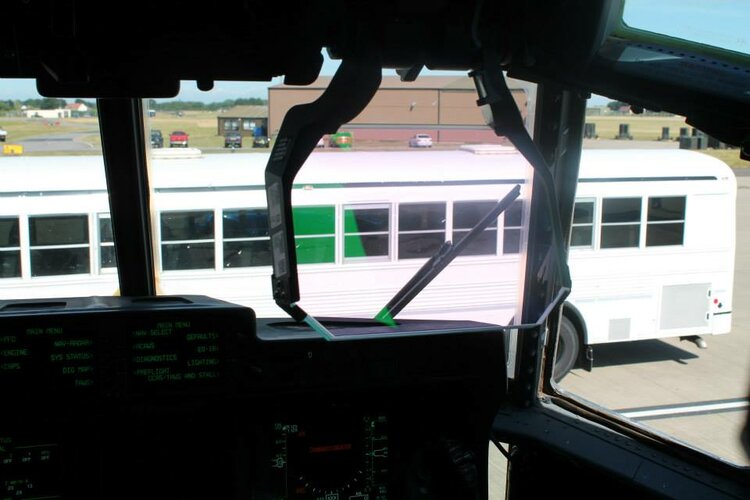 45923_10152367072991490_778021992_n.jpg53.5 KB · Views: 55
45923_10152367072991490_778021992_n.jpg53.5 KB · Views: 55 -
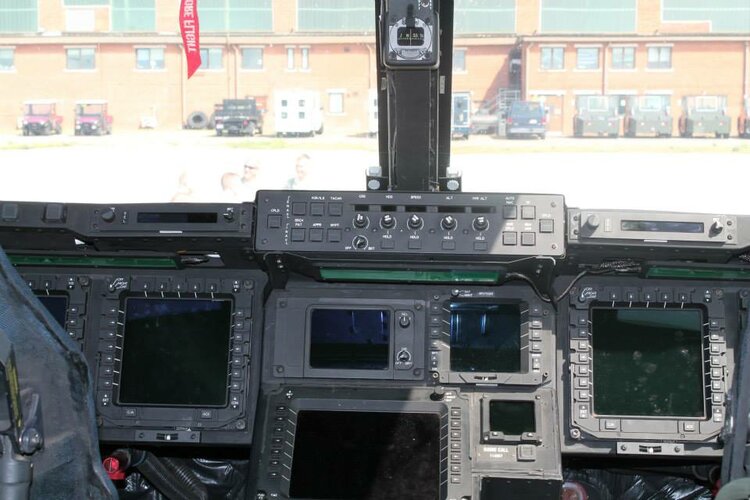 57952_10152367077606490_914364505_n.jpg71.6 KB · Views: 51
57952_10152367077606490_914364505_n.jpg71.6 KB · Views: 51 -
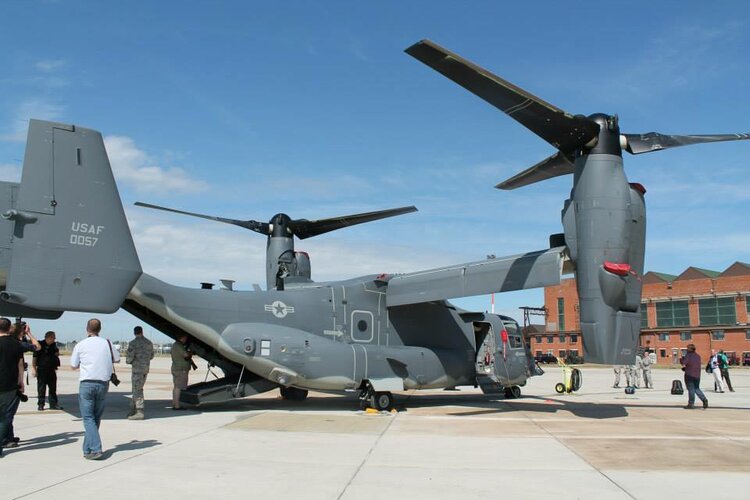 74003_10152367077266490_2070630610_n.jpg55.7 KB · Views: 50
74003_10152367077266490_2070630610_n.jpg55.7 KB · Views: 50 -
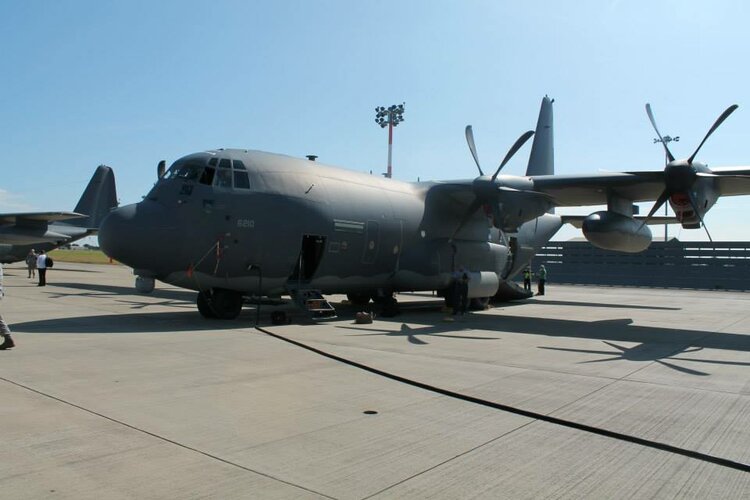 994854_10152367073356490_1610628513_n.jpg48.3 KB · Views: 45
994854_10152367073356490_1610628513_n.jpg48.3 KB · Views: 45 -
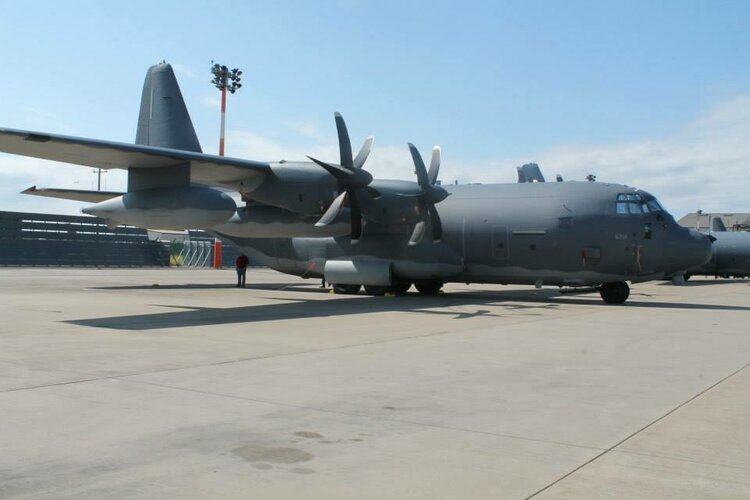 998228_10152367073316490_430448196_n.jpg38.6 KB · Views: 53
998228_10152367073316490_430448196_n.jpg38.6 KB · Views: 53
Q-nimbus
ACCESS: Confidential
- Joined
- 1 June 2020
- Messages
- 177
- Reaction score
- 204
Considering the fact that it took 18 years to get the V-22 Osprey from first flight to operational status I don’t think a secret VTOL like Senior Citizen aimed for ever flew.
First of all, the long design and extreme difficullities the V-22 Osprey experienced during design shows how extremely complex such a machine is. And that’s just the basic vehicle - let alone a stealth version.
As the aircraft that the Senior Citizen aimed for would operate in hostile and and thus very dangerous environments it wouldn’t make sense to fly in one of your most technologically advanced aircraft. The risk of losing one and risk losing and compromising highly advanced secret technology to your enemies… there are very, very few targets that are worth taking that much risk. It’s much, much easier to just bomb the place. (UBL is a good example: from a military point of view he was insignificant after 9/11; the easiest way of getting rid of him would have been to just bomb his hideout. The reason the whole raid went the way it did was purely because of political reasons - and they even lost a SHHHH-Hawk).
These are just the technological and operational factors. But there’s also the cost. Just look at the insane amount of money the V-22 Osprey cost to develop: 27 billion dollars. That’s a lot of money, also for a black program. And a black program like Senior Citizen would cost a LOT more than this. With these kind of budgets, it’s hard te keep something secret: too much money and too much people involved.
I could believe that a few modified existing airframes might have flown in the course of the Senior Citizen program. But considering how difficult it was to develop a VTOL Transport in the white world and how insanely expensive it was, I think there never was an actual airframe, not even a prototype, let alone an operational one.
It was just too difficult, too expensive and too risky.
But I sure hope I’m wrong!
First of all, the long design and extreme difficullities the V-22 Osprey experienced during design shows how extremely complex such a machine is. And that’s just the basic vehicle - let alone a stealth version.
As the aircraft that the Senior Citizen aimed for would operate in hostile and and thus very dangerous environments it wouldn’t make sense to fly in one of your most technologically advanced aircraft. The risk of losing one and risk losing and compromising highly advanced secret technology to your enemies… there are very, very few targets that are worth taking that much risk. It’s much, much easier to just bomb the place. (UBL is a good example: from a military point of view he was insignificant after 9/11; the easiest way of getting rid of him would have been to just bomb his hideout. The reason the whole raid went the way it did was purely because of political reasons - and they even lost a SHHHH-Hawk).
These are just the technological and operational factors. But there’s also the cost. Just look at the insane amount of money the V-22 Osprey cost to develop: 27 billion dollars. That’s a lot of money, also for a black program. And a black program like Senior Citizen would cost a LOT more than this. With these kind of budgets, it’s hard te keep something secret: too much money and too much people involved.
I could believe that a few modified existing airframes might have flown in the course of the Senior Citizen program. But considering how difficult it was to develop a VTOL Transport in the white world and how insanely expensive it was, I think there never was an actual airframe, not even a prototype, let alone an operational one.
It was just too difficult, too expensive and too risky.
But I sure hope I’m wrong!
Last edited:
A horribly behind schedule and over-budget mismanaged project does not make an apt comparison.Considering the fact that it took 18 years to get the V-22 Osprey from first flight to operational status I don’t think a secret VTOL like Senior Citizen aimed for ever flew.
Try Lockheed A-12 as a successful example.
- Joined
- 27 September 2006
- Messages
- 6,418
- Reaction score
- 6,827
I find the idea of a stealthy VSTOL transport puzzling as all the VSTOL aircraft I know of whether jet, fan or rotor are incredibly noisy.
Using a C130 or CH47 to insert some Land Rovers or similar a few miles away seems a better way of doing it.
Using a C130 or CH47 to insert some Land Rovers or similar a few miles away seems a better way of doing it.
Sometimes you might want to land right in the middle of the enemy... a soccer field, embassy grounds, something. In which case you want to get in and out quickly and as quietly as possible. A V/STOL cargo transport is never going to be silent, but it could sure be quieter - and less visible on radar and IR - than a CH-47.I find the idea of a stealthy VSTOL transport puzzling as all the VSTOL aircraft I know of whether jet, fan or rotor are incredibly noisy.
Using a C130 or CH47 to insert some Land Rovers or similar a few miles away seems a better way of doing it.
RavenOne
ACCESS: Top Secret
- Joined
- 18 June 2008
- Messages
- 1,005
- Reaction score
- 2,690
Nah, too risky. It'd end up in too many pictures. Whatever is out there is kept locked away in hangars hidden from social medias ever present gaze, and all types of satellite.
I would go so far as to say that there is such a lack of practical applications for this type of platform (i.e. places to go worth the risk of losing your highest tech airframe) that its something of a non-starter as a fielded type.
The US must have been extracting people and things out of the USSR before the wall fell and we know that lines were tapped or otherwise interfered with by modified Hughes 500, and we also have had the Fulton extraction system since the 50s.
Is something like Senior Citizen worth the effort?
BTW. I'm in full devils advocate mode.
You have a point there as it took pretty much 4decades to get to where we are with the V-22 Osprey from the Xv-15 demonstrators to the JVX and first flight of Osprey Then another 2 decades of frustrations, few tragic accidents to get it in service. I was at RAF Mildenhall Air Fete 2000 and talking to AFSOC lot form Hulbert Field. They were very confident that Mildenhall would have the CV-22 by 2007. Didn’t happen till 6 years later.
Mind you it’s taken pretty much 3 if not 4 decades of research, various experimental Testbeds et al for a Harrier replacement to get the F-35B where it is …operationally now.
Laughingly in theory if it does exist SC would be very useful now with Ukriane situ.
cheers
Joby makes an extremely quiet VTOL. Its not too much of a stretch to imagine some really savvy defense industry engineers could have done the same at an earlier date...
View: https://www.youtube.com/watch?v=itP8-3j2UZI
SAustin16
Bravo to All Brave Test Pilots
- Joined
- 12 January 2008
- Messages
- 139
- Reaction score
- 37
Regarding the capability to successfully produce a highly technical aircraft, I rarely see any reference to the Leadership / Program Management aspect of the equation.
One of the primary drivers of the success of the A-12 / SR-71 was Kelly Johnson and the leadership team that he formed.
The C-17 is another example. The program was under serious threat of cancellation during the first several years of production (1989 - 1994). From my perspective within the program, everyone was "flying in different directions" every day. In my opinion, the unsung hero that saved the program was Don Kozlowski, who took over as Program Manager around 1994. The man was outstanding, quickly reorganizing and reinvigorating the team, and within several months, we were on the path to success.
Both Kelly and Don showed true genius in their approaches to running the programs, and their charismatic personalities only added to the success.
With the right leadership in place, a project like Senior Citizen might be a reality today, but we just don't know it yet.
CAVU
One of the primary drivers of the success of the A-12 / SR-71 was Kelly Johnson and the leadership team that he formed.
The C-17 is another example. The program was under serious threat of cancellation during the first several years of production (1989 - 1994). From my perspective within the program, everyone was "flying in different directions" every day. In my opinion, the unsung hero that saved the program was Don Kozlowski, who took over as Program Manager around 1994. The man was outstanding, quickly reorganizing and reinvigorating the team, and within several months, we were on the path to success.
Both Kelly and Don showed true genius in their approaches to running the programs, and their charismatic personalities only added to the success.
With the right leadership in place, a project like Senior Citizen might be a reality today, but we just don't know it yet.
CAVU
How much payload could carry a flying wing with four F135s and their four lift-fans ? with 4*19 tons of thrust, there must be some margins... and even more margins if VTOL is traded for STOL.
Put otherwise: now that the F-35 powerplant seems to work reliably enough, maybe the best way would be to start from there: two of them, four of them, six of them... build a stealth / flying wing transport from there.
Edit: 4*19 = 78 metric tons. Wikipedia tells me that a C-130J MTOW is 70 metric tons or 155 000 pounds for you imperial units maniacs
Put otherwise: now that the F-35 powerplant seems to work reliably enough, maybe the best way would be to start from there: two of them, four of them, six of them... build a stealth / flying wing transport from there.
Edit: 4*19 = 78 metric tons. Wikipedia tells me that a C-130J MTOW is 70 metric tons or 155 000 pounds for you imperial units maniacs
Last edited:
- Joined
- 18 October 2006
- Messages
- 4,214
- Reaction score
- 4,924
The challenge with any large/heavy VTOL is the downwash. While I have no doubt that VTOL platforms can be produced that reduce the volume of rotor noise, physics says to lift 100 lbs., you have to have at least 101 lbs. of thrust. As an example both the V22 and the CH53 have "high" downwash/outwash. The V22 has higher velocity because the rotors are smaller to make that thrust. H53 also has a relatively high downwash/outwash but it is spread over a higher volume of space. Harrier while able to operate from semi-prepared sites in Northern Germany could not just land anywhere as it would "dig it's own grave" (as told to me by a USMC Harrier pilot many years ago).How much payload could carry a flying wing with four F135s and their four lift-fans ? with 4*19 tons of thrust, there must be some margins... and even more margins if VTOL is traded for STOL.
Put otherwise: now that the F-35 powerplant seems to work reliably enough, maybe the best way would be to start from there: two of them, four of them, six of them... build a stealth / flying wing transport around that.
In the development of a extra heavy lift VTOL platform during the Army Joint Heavy Lift and USAF Joint Future Theater Lift efforts, the massive wind of a C-130/C17 sized VTOL would make anything else look like a gentle spring breeze.
This might not have been an issue for an aircraft designed for stealthy ingress and one time landings someplace, but I don't think there is much chance of it being "quiet" during the end game.
Maybe combine a light extraction drone with the slinky effect…where the bottom just stays there? A one man pod deal with the soldier stands in the middle if possible and a passing aircraft skyhooks them out?
It seems to have the whole quiet hover thing very well taken care of.....The challenge with any large/heavy VTOL is the downwash. While I have no doubt that VTOL platforms can be produced that reduce the volume of rotor noise, physics says to lift 100 lbs., you have to have at least 101 lbs. of thrust. As an example both the V22 and the CH53 have "high" downwash/outwash. The V22 has higher velocity because the rotors are smaller to make that thrust. H53 also has a relatively high downwash/outwash but it is spread over a higher volume of space. Harrier while able to operate from semi-prepared sites in Northern Germany could not just land anywhere as it would "dig it's own grave" (as told to me by a USMC Harrier pilot many years ago).How much payload could carry a flying wing with four F135s and their four lift-fans ? with 4*19 tons of thrust, there must be some margins... and even more margins if VTOL is traded for STOL.
Put otherwise: now that the F-35 powerplant seems to work reliably enough, maybe the best way would be to start from there: two of them, four of them, six of them... build a stealth / flying wing transport around that.
In the development of a extra heavy lift VTOL platform during the Army Joint Heavy Lift and USAF Joint Future Theater Lift efforts, the massive wind of a C-130/C17 sized VTOL would make anything else look like a gentle spring breeze.
This might not have been an issue for an aircraft designed for stealthy ingress and one time landings someplace, but I don't think there is much chance of it being "quiet" during the end game.
and
- Joined
- 18 October 2006
- Messages
- 4,214
- Reaction score
- 4,924
Concur that Joby has indeed created a quiet platform. However, I think there is a significant difference in a small light platform designed to move four people and a stealthy platform chalk full of a significant amount of electronic equipment and survivability systems, designed to carry at least half a dozen heavily equipped soldiers and potentially their vehicles. Any number of open prop-rotors are also very hard to hide from radar of various types.
- Joined
- 4 May 2008
- Messages
- 2,439
- Reaction score
- 762
Then there's the issue of rotor efficiency. The way joby (and every other eVTOL company) design rotors to be quiet is to slow down the blades. Depending whom you ask, it is said that noise varies with the fifth(!) power of tip speed. But if you decrease rpm, then you must increase torque, and torque is weight (motors , gearboxes) the enemy of VTOL.
Military machines notoriously are payload and fixed-equipment hungry. What works sufficiently well for the commercial sector is less likely to succeed in the military world.
Military machines notoriously are payload and fixed-equipment hungry. What works sufficiently well for the commercial sector is less likely to succeed in the military world.
The torque variation isn't what you expect: blade chord is larger and span reduced. This should decrease or at least level the torque value. The setback is in the average power need: with the reduced span and CG position closer to the hub, the inertia momentum is decreased leading to an increase draw on power (think at all the subtle variations coming with real flight like Wind gust, attitude changes etc...).
what is sabca/fritel XRA-2A?It wasn't an expresso, but definitely the Sabca/Fritel XRA-2A.
Dreamfighter
'Senior Something'
- Joined
- 13 July 2008
- Messages
- 483
- Reaction score
- 646
what is sabca/fritel XRA-2A?It wasn't an expresso, but definitely the Sabca/Fritel XRA-2A.
A Belgian flying fryer, designed to evade French cooks. (IOW: a joke)
thanks oh also do you know belgium made a mini hawker hunter during the 1950swhat is sabca/fritel XRA-2A?It wasn't an expresso, but definitely the Sabca/Fritel XRA-2A.
A Belgian flying fryer, designed to evade French cooks. (IOW: a joke)
Aeroweanie
ACCESS: Confidential
- Joined
- 1 May 2020
- Messages
- 96
- Reaction score
- 263
This might have been covered before, but...
Has anyone noticed the following AIAA papers:
AIAA 2013-1097 An Overview of the Air Force's Speed Agile Concept Demonstration Program
AIAA 2013-1098 Powered Lift CFD Predicitons of a Transonic Cruising STOL Military Transport
AIAA 2013-1099 Low Speed Powered Lift Testing of a Transonic Cruise Efficient STOL Military Transport
AIAA 2013-1100 Design and Transonic Wind Tunnel Testing of a Cruise Efficient STOL Military Transport
AIAA 2013-1101 Overview of the Aerodynamic Model and Flight Control System of a Speed Agile Concept Demonstrator
AIAA 2013-1102 The Design and Test of a Swept Wing Upper Surface Blowing (USB) Concept
"The United States Air Force faces numerous challenges in today’s changing world environment, particularly in regards to its mobility fleet. To address these challenges the Air Force Research Laboratory has been making focused investments in technologies for future airlifters. A major emphasis by the Aerospace Systems Directorate has been on ‘speed agility,’ a phrase coined for an aircraft that is capable of efficient flight at low speeds (~90 knots) and at transonic cruise speeds (Mach 0.8). A speed agile aircraft is able to takeoff and land on short airfields as well as cruise faster than today’s military mobility fleet, giving it unparalleled efficiency, access, and flexibility. In order to validate requisite technologies a multi-year program was undertaken with government and industry partners that aimed to refine host vehicle configurations, validate aerodynamic performance at low speed and at transonic conditions, and develop and evaluate flight controls technologies to ensure safe, robust aircraft operations. These goals were achieved for two separate hybrid powered lift systems by way of testing at the NASA Langley 14’x22’, the AEDC National Full Scale Aerodynamic Complex, the NASA Langley National Transonic Facility, the NASA Ames Vertical Motion Simulator, and the AFRL LAMARS simulator."
Lockheed Martin and Boeing designs:

Has anyone noticed the following AIAA papers:
AIAA 2013-1097 An Overview of the Air Force's Speed Agile Concept Demonstration Program
AIAA 2013-1098 Powered Lift CFD Predicitons of a Transonic Cruising STOL Military Transport
AIAA 2013-1099 Low Speed Powered Lift Testing of a Transonic Cruise Efficient STOL Military Transport
AIAA 2013-1100 Design and Transonic Wind Tunnel Testing of a Cruise Efficient STOL Military Transport
AIAA 2013-1101 Overview of the Aerodynamic Model and Flight Control System of a Speed Agile Concept Demonstrator
AIAA 2013-1102 The Design and Test of a Swept Wing Upper Surface Blowing (USB) Concept
"The United States Air Force faces numerous challenges in today’s changing world environment, particularly in regards to its mobility fleet. To address these challenges the Air Force Research Laboratory has been making focused investments in technologies for future airlifters. A major emphasis by the Aerospace Systems Directorate has been on ‘speed agility,’ a phrase coined for an aircraft that is capable of efficient flight at low speeds (~90 knots) and at transonic cruise speeds (Mach 0.8). A speed agile aircraft is able to takeoff and land on short airfields as well as cruise faster than today’s military mobility fleet, giving it unparalleled efficiency, access, and flexibility. In order to validate requisite technologies a multi-year program was undertaken with government and industry partners that aimed to refine host vehicle configurations, validate aerodynamic performance at low speed and at transonic conditions, and develop and evaluate flight controls technologies to ensure safe, robust aircraft operations. These goals were achieved for two separate hybrid powered lift systems by way of testing at the NASA Langley 14’x22’, the AEDC National Full Scale Aerodynamic Complex, the NASA Langley National Transonic Facility, the NASA Ames Vertical Motion Simulator, and the AFRL LAMARS simulator."
Lockheed Martin and Boeing designs:
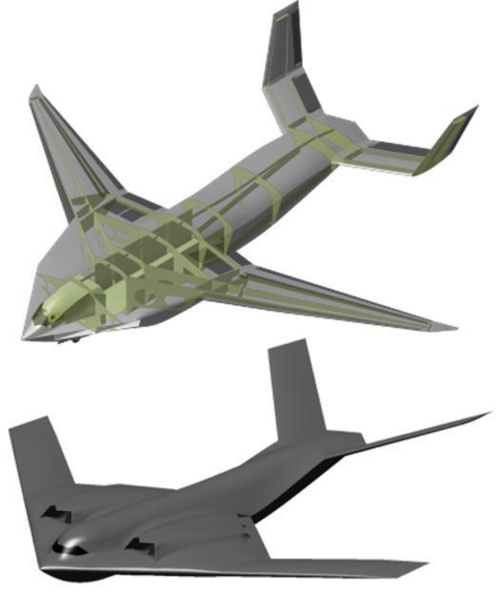
Wait, what?thanks oh also do you know belgium made a mini hawker hunter during the 1950s
Never heard of it.... Do you have any more info?
Wait, what?thanks oh also do you know belgium made a mini hawker hunter during the 1950s
Never heard of it.... Do you have any more info?
RetiredAFGuy
20 years of Phantom Phun
- Joined
- 10 January 2019
- Messages
- 28
- Reaction score
- 53
One thing I've learned since retiring from the USAF is that when old GI's get together, they talk about their time in service and a lot of interesting information can be heard. File these two anecdotes under GI War Stories, but what if they point to the existence of Senior Citizen?
1) A conversation with another retired GI who had been Special Forces and the subject came to "What do you miss the most about your service time?" Answer: "Jumping HALO, especially out of Black Betty." A response to a puzzled look was "Stealth planes don't just drop bombs, but I've said too much."
Either it was a reference to doing jumps from a B-2 bomb bay or a reference to a stealth transport.
2) A story from the collapse of Libya. The UK had an oil exploration crew operating a rig in southern Libya and wanted to evacuate them before rebel forces decided they could use hostage westerners or the spectacle of westerners being publicly executed.
The UK had the forces to do the job (SAS), but no effective way to get them to/from the oil rig. So a request was made to the US for assistance in transport.
The point of the story was the absolute shock by the drill crew when two unknown air vehicles landed next to the drilling complex and disgorged SAS troops that evacuated the 70+ drill crew team. Supposedly all the evacuated workers were briefed on and signed Official Secrets Act documents after landing at a safe air base well out of Libya.
Nothing concrete in either story, but very possibly some trails that could be explored by skilled researchers on the board.
1) A conversation with another retired GI who had been Special Forces and the subject came to "What do you miss the most about your service time?" Answer: "Jumping HALO, especially out of Black Betty." A response to a puzzled look was "Stealth planes don't just drop bombs, but I've said too much."
Either it was a reference to doing jumps from a B-2 bomb bay or a reference to a stealth transport.
2) A story from the collapse of Libya. The UK had an oil exploration crew operating a rig in southern Libya and wanted to evacuate them before rebel forces decided they could use hostage westerners or the spectacle of westerners being publicly executed.
The UK had the forces to do the job (SAS), but no effective way to get them to/from the oil rig. So a request was made to the US for assistance in transport.
The point of the story was the absolute shock by the drill crew when two unknown air vehicles landed next to the drilling complex and disgorged SAS troops that evacuated the 70+ drill crew team. Supposedly all the evacuated workers were briefed on and signed Official Secrets Act documents after landing at a safe air base well out of Libya.
Nothing concrete in either story, but very possibly some trails that could be explored by skilled researchers on the board.
Officially the libya job was done with a pair of c-130'sOne thing I've learned since retiring from the USAF is that when old GI's get together, they talk about their time in service and a lot of interesting information can be heard. File these two anecdotes under GI War Stories, but what if they point to the existence of Senior Citizen?
1) A conversation with another retired GI who had been Special Forces and the subject came to "What do you miss the most about your service time?" Answer: "Jumping HALO, especially out of Black Betty." A response to a puzzled look was "Stealth planes don't just drop bombs, but I've said too much."
Either it was a reference to doing jumps from a B-2 bomb bay or a reference to a stealth transport.
2) A story from the collapse of Libya. The UK had an oil exploration crew operating a rig in southern Libya and wanted to evacuate them before rebel forces decided they could use hostage westerners or the spectacle of westerners being publicly executed.
The UK had the forces to do the job (SAS), but no effective way to get them to/from the oil rig. So a request was made to the US for assistance in transport.
The point of the story was the absolute shock by the drill crew when two unknown air vehicles landed next to the drilling complex and disgorged SAS troops that evacuated the 70+ drill crew team. Supposedly all the evacuated workers were briefed on and signed Official Secrets Act documents after landing at a safe air base well out of Libya.
Nothing concrete in either story, but very possibly some trails that could be explored by skilled researchers on the board.
uk-libya-britain-cameron-idUKTRE71P12220110226
- Joined
- 26 May 2011
- Messages
- 2,322
- Reaction score
- 3,478
I'll ask around.
I did run into a bloke who had been evacuated from Libya and he definitely said Hercules. It was on the telly! He actually asked if I'd seen him on the telly. Didn't say whose Herk or who the extraction team was. I never thought to ask. Assumed RAF out of Cyprus.
I do remember the advice for lads working in Algeria in the 90s - always carry your passport and a white pillow case.
Chris
I did run into a bloke who had been evacuated from Libya and he definitely said Hercules. It was on the telly! He actually asked if I'd seen him on the telly. Didn't say whose Herk or who the extraction team was. I never thought to ask. Assumed RAF out of Cyprus.
I do remember the advice for lads working in Algeria in the 90s - always carry your passport and a white pillow case.
Chris
Last edited:
- Joined
- 26 May 2011
- Messages
- 2,322
- Reaction score
- 3,478
Found this.I'll ask around.
I did run into a bloke who had been evacuated from Libya and he definitely said Hercules. It was on the telly! He actually asked if I'd seen him on the telly. Didn't say whose Herk or who the extraction team was. I never thought to ask. Assumed RAF out of Cyprus.
I do remember the advice for lads working in Algeria in the 90s - always carry your passport and a white pillow case.
Chris
That's the bloke i know at 4:30ish.
Chris
Q-nimbus
ACCESS: Confidential
- Joined
- 1 June 2020
- Messages
- 177
- Reaction score
- 204
They didn’t have to sign the Official Secrets Act because of some secret plane, but because of their dealings with the SAS.One thing I've learned since retiring from the USAF is that when old GI's get together, they talk about their time in service and a lot of interesting information can be heard. File these two anecdotes under GI War Stories, but what if they point to the existence of Senior Citizen?
1) A conversation with another retired GI who had been Special Forces and the subject came to "What do you miss the most about your service time?" Answer: "Jumping HALO, especially out of Black Betty." A response to a puzzled look was "Stealth planes don't just drop bombs, but I've said too much."
Either it was a reference to doing jumps from a B-2 bomb bay or a reference to a stealth transport.
2) A story from the collapse of Libya. The UK had an oil exploration crew operating a rig in southern Libya and wanted to evacuate them before rebel forces decided they could use hostage westerners or the spectacle of westerners being publicly executed.
The UK had the forces to do the job (SAS), but no effective way to get them to/from the oil rig. So a request was made to the US for assistance in transport.
The point of the story was the absolute shock by the drill crew when two unknown air vehicles landed next to the drilling complex and disgorged SAS troops that evacuated the 70+ drill crew team. Supposedly all the evacuated workers were briefed on and signed Official Secrets Act documents after landing at a safe air base well out of Libya.
Nothing concrete in either story, but very possibly some trails that could be explored by skilled researchers on the board.
- Joined
- 5 May 2007
- Messages
- 1,483
- Reaction score
- 2,860
Worth remembering that signing an Official Secrets Act declaration doesn't bind you by the law. Everyone in the country is bound by it, because that's how laws work. What you're signing is a confirmation that you know you're dealing with things that are covered by the Act, and that you're aware of the penalties for breaking it.They didn’t have to sign the Official Secrets Act because of some secret plane, but because of their dealings with the SAS.
As far as the Libya thing goes, it's entirely possible that someone not generally interested in aircraft would consider anything out of the ordinary to be an 'unknown air vehicle'. Could be a C-130 under odd lighting and stressful circumstances, could be a more exotic SOF type, could be a secret squirrel job. The safe bet is the ordinary aircraft.
Similar threads
-
McDonnell Douglas & Boeing BWB projects
- Started by flateric
- Replies: 109
-
ASD Preliminary Designs in Splendid Vision, Unswerving Purpose
- Started by XP67_Moonbat
- Replies: 16
-
INVESTIGATION OF PERFORATED PLASTIC SPHERES CONCEPT FOR FUEL TANK FIRE SUPPRESSION
- Started by Grey Havoc
- Replies: 5
-
NASA Oblique-Wing Missiles Launcher Aircraft
- Started by hesham
- Replies: 2
-



